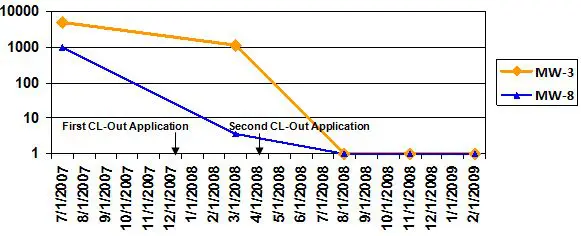Bioremediation of BTEX at an Industrial Site in Florida
Background
Petrox® bioaugmentation was used to remediate ground water contaminated by benzene, toluene, ethylbenzene and xylene (BTEX) at an industrial facility in central Florida (Facility ID No. 8521705). The bioremediation was implemented in perimeter wells around the source area where air sparging and vapor extraction was implemented. This combined approach provided cost-effective, full-site remediation by using complementary technologies.
Remediation Approach and Results
Petrox® was introduced into the contaminated ground water in the perimeter of the source area plume by injection through temporary well points. Two applications of Petrox® were completed. The initial application was in December 2007 and a subsequent application was completed in April 2008. During each application 550 gallons of Petrox® microbial slurry were injected into the ground water through 19 injection points. The treatment covered an area of approximately 7,000 square feet.
The ground water treatment results were monitored by laboratory analysis of ground water samples for the contaminants of concern. The quarterly monitoring results after the applications showed an immediate and continuous decrease in the BTEX concentrations. The following chart shows the total BTEX concentrations in three quarterly sampling events after the implementation of Petrox® bioaugmentation.
Conclusions
This project demonstrates two of the benefits of aerobic bioaugmentation. Petrox® organisms were able to metabolize the BTEX compounds, which were initially at part per million levels, to below detection limits. Bioaugmentation provides active control of the site with hydrocarbon-degrading organisms compatible with air sparging and vapor extraction in the source area, where the contaminant concentrations persisted longer than in the bioaugmentation area.


